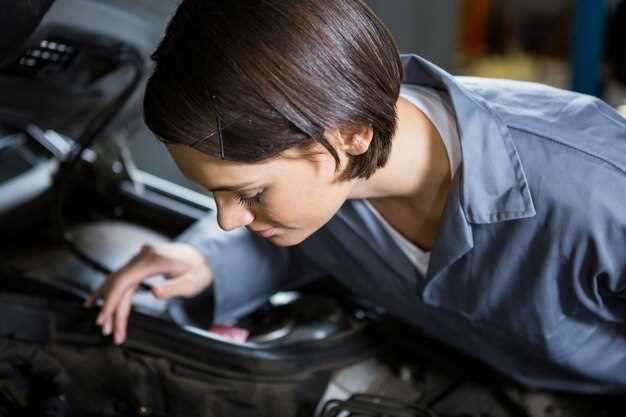
Before hitting the track, a comprehensive inspection of the race car is crucial to ensure optimal performance, safety, and reliability. Every component, no matter how minor, plays a significant role in the car’s overall functionality. Conducting a thorough check can mean the difference between a successful race and a catastrophic failure on the track.
One of the primary areas to focus on during the inspection is the vehicle’s mechanical systems. This includes the engine, transmission, and suspension components. Ensuring that these parts are in top condition not only enhances performance but also reduces the risk of mechanical breakdowns during the race. Additionally, inspecting the fuel and oil levels, as well as the integrity of the fuel lines and hoses, is essential for maintaining optimal engine performance.
Equally important is the examination of safety features such as the brakes, tires, and safety harnesses. A complete inspection of the brake system is vital to ensure responsive stopping power at high speeds. The tires must be assessed for wear and proper pressure, as they are the only contact point between the car and the track. Furthermore, checking the functionality of safety harnesses and roll cages can significantly influence driver safety in the event of an accident.
Evaluating the Engine Performance and Maintenance History

Before any racing event, a thorough inspection of the engine is crucial to ensure optimal performance. Begin by examining the engine’s components for signs of wear and tear. Check the condition of the timing belt, gaskets, and oil seals, as these elements can significantly affect engine efficiency. Any visible signs of oil leaks or irregularities in the engine’s physical structure should raise immediate concerns.
The engine performance can be accurately gauged by reviewing the maintenance history. Understanding how often the engine has been serviced, along with the types of maintenance performed, can provide valuable insights into its reliability. Look for records detailing oil changes, filter replacements, and any modifications made to enhance performance. An engine that has been regularly serviced is more likely to operate at peak performance levels.
Another critical aspect is the engine’s cooling system. Inspect the radiator and hoses for blockages or leaks, as overheating can lead to severe damage during a race. Pay attention to the coolant levels and quality; insufficient or contaminated coolant can impair the engine’s efficiency.
Lastly, evaluate the power output through diagnostic tools that measure engine performance metrics. Testing horsepower, torque, and RPM can confirm whether the engine is functioning as intended. A comprehensive inspection combined with a detailed maintenance history will ensure the engine is ready for racing challenges ahead.
Assessing the Suspension and Chassis Integrity
When preparing for a race, a comprehensive evaluation of the suspension and chassis is critical. The suspension system significantly impacts the car’s handling, tire contact, and overall performance on the track. A thorough inspection should begin with an analysis of the shock absorbers and struts, ensuring they are in good condition and free of leaks. Worn components can lead to unpredictable handling and diminished performance.
Next, focus on the alignment of the suspension components. Misalignment can cause uneven tire wear and impact cornering stability. Verify that the camber, caster, and toe settings are within the recommended specifications for racing conditions. Additionally, inspect bushings and mounts for signs of wear or damage, as these parts play a vital role in maintaining the chassis’s structural integrity.
The chassis itself must be closely examined. Look for any signs of cracks, corrosion, or deformation, particularly around high-stress areas such as the roll cage and suspension mounts. A compromised chassis can severely affect safety and handling, making it essential to address any issues before race day.
Furthermore, consider the overall weight distribution and center of gravity. An optimal setup enhances stability and responsiveness during high-speed maneuvers. This assessment is especially relevant in a pre-purchase scenario, where understanding the vehicle’s prior performance and any modifications made to the suspension system can influence your buying decision.
Ultimately, a meticulous inspection of the suspension and chassis is a non-negotiable step in the racing preparation process. Ensuring both systems are in peak condition will not only enhance performance but also safeguard the driver and vehicle throughout the race.
Checking the Safety Equipment Compliance and Condition

Before any race, it is crucial to conduct a thorough inspection of the safety equipment to ensure both compliance with regulatory standards and optimal condition. This encompasses various components that are vital for the protection of the driver and the overall safety of the vehicle.
First, verify that the helmet adheres to the latest safety standards, such as FIA or Snell certifications. Inspect it for any signs of damage, including cracks or degradation of the lining. Additionally, make sure that the helmet is fitted correctly, offering maximum protection without compromising comfort.
Next, assess the fire-resistant racing suit, gloves, and shoes. These garments should comply with the FIA regulations regarding fire resistance. Check for any tears, worn-out seams, or discoloration that may indicate reduced effectiveness. This equipment should also fit snugly to prevent any risk of catching on components inside the car.
The harness system is another critical aspect to inspect. Ensure that the belts are not frayed, twisted, or damaged. Proper installation must be confirmed, as the harness must hold the driver securely in place during the race. A visual inspection along with a tug test can help confirm the security and condition of the equipment.
Evaluate the roll cage and other structural safety elements in the car. Look for any signs of deformation or wear, as these can compromise the integrity of the safety features in the event of a collision. The welds and joints should be intact, with no rust or corrosion present.
Finally, inspect the fire suppression system and first aid kit, ensuring they are functional and within reach of the driver. Check expiration dates on fire extinguishers and other safety tools, and make sure they are properly mounted and secured within the vehicle. Each item should be easily accessible during an emergency.
In conclusion, a comprehensive inspection of safety equipment is necessary to mitigate risks during a race. Compliance with safety standards combined with proper condition checks will enhance driver safety and improve overall race performance.




